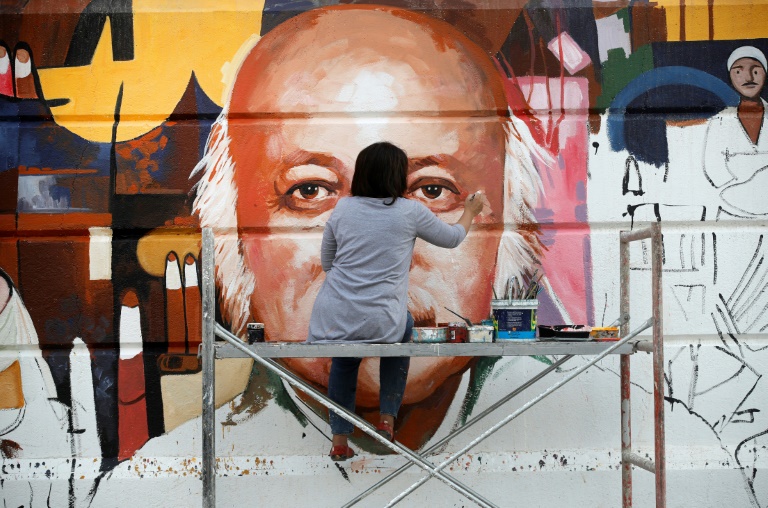Where the guaranteed income movement is going next
Cash programs for low-income parents are popping up in city
after city. But they’re no replacement for federal policy.
/cdn.vox-cdn.com/uploads/chorus_image/image/70803512/AP22080593580742.0.jpg)
They’re popping up in place after place. Baltimore. New York City. Jackson, Mississippi.
I’m talking about guaranteed income programs that give cash, no strings attached, to a specific group of people: low-income parents.
Guaranteed income (GI) is similar to, but not quite the same as, universal basic income (UBI). Whereas UBI aims to offer enough money for a basic subsistence living to every single adult, guaranteed income might provide a more modest amount — less than enough to live on — to a more targeted group of people.
The timing feels right for a crop of GI programs that target low-income parents. With the end of the Biden administration’s expanded child tax credit and the rise of inflation, America’s poorest families are having a harder time making ends meet.
Starting May 2, Baltimore parents ages 18-24 who meet the income criteria can apply for the city’s new GI pilot. By summer, 200 randomly selected applicants will begin getting unconditional cash payments of $1,000 per month for 24 months. In a city marked by a history of redlining, the pilot aims to reduce poverty for predominantly Black and Latino working-class communities.
It also has a second goal: to add to the growing body of evidence about the effectiveness of cash programs. So experts will run a randomized controlled trial to assess how the cash affects recipients’ physical and mental health, employment, food security, and more. They’ll track those who receive cash as well as a control group that doesn’t get cash but may get other incentives.
Meanwhile, New York City is home to another GI program. Payments to an initial cohort of 100 low-income mothers began in July 2021, with plans to give them $500 or $1,000 per month for three years. So far, the cash has helped these moms better afford rent, child care, food, and diapers. This month, the program accepted applications for a new cohort of 500 mothers.
And in Jackson, Mississippi, the Magnolia Mother’s Trust — the first GI program to specifically target extremely low-income families headed by Black mothers in the US — has just enrolled its fourth cohort: 100 mothers who’ll get $1,000 per month for one year. Results from previous cohorts have shown positive effects on health and education, with recipients 27 percent more likely to go to a doctor if they were sick and 20 percent more likely to have kids performing above grade level.
“This is not a long-term solution”
The expanded child tax credit (CTC) made a major positive difference for millions of parents and kids. When it expired, they were left in the lurch. Child poverty spiked by 41 percent.
“It helped ease my burden a lot when I started getting the monthly child tax credits last year. Not getting the payments anymore has definitely put a strain on my budget,” explained a Mississippi-based single mom in Ms. magazine. Luckily, participating in a GI program has helped ease that strain again. “Being a part of the Magnolia Mother’s Trust made me realize that things can change for the better,” she added.
Yet Aisha Nyandoro, who runs that program, told me that what the US ultimately needs is guaranteed income enacted as federal policy, not a patchwork of small GI programs sprinkled across a few cities.
“I’m thrilled that the organization I lead is standing in the gap,” she said. “But this is not a long-term solution. … We need a scale that we can only get at the national level.”
Michael Tubbs agrees with her. As the former mayor of Stockton, California, he spearheaded a successful 2017 pilot program there offering $500, no strings attached, to some residents, and in 2020 he created Mayors for a Guaranteed Income.
“Pilots are important, but they are not a replacement for a federal policy,” Tubbs told me.
Where should guaranteed income go from here?
The point of running pilots is to amass evidence that an intervention works so you can then make a convincing case that it should become policy. In a sense, GI pilots targeting parents are all tryouts for an idea that we’ve already implemented as federal policy: the expanded CTC.
The CTC proved extremely effective. In July 2021, when the first checks went out to parents, the child poverty rate dropped from 15.8 percent to 11.9 percent, the lowest rate on record. And yet, that evidence wasn’t enough to make the CTC permanent. Although polling found a bipartisan majority of voters wanted it to be permanent, Congress let it lapse — with Sen. Joe Manchin’s opposition dealing the final blow.
So you might wonder whether there’s much point in continuing to run pilots aimed at amassing more evidence. Maybe a lack of evidence isn’t the constraining factor. Should the movement for GI focus its efforts on something else, like building political will?
“I think it’s both/and,” Nyandoro told me. “We can get the data about the benefits of guaranteed income via the pilots, and we can simultaneously build up political will and advocacy and education so we can go about putting in the politicians that will advocate for the innovative solutions we need.”
She explained that it’s useful to have GI pilots sprinkled across various cities because, in addition to directly helping recipients, these pilots educate the communities they’re embedded in about what GI is and why it’s a good idea. That can help counter pernicious and persistent myths about poor people, like the false idea that they can’t be trusted to use cash rationally and will instead spend it on drugs. Some reports have suggested that Manchin opposed a permanent CTC in part because he believed recipients would spend the money on drugs.
“I think the CTC not being permanent is a perfect example of what happens when we hold a false narrative about individuals living in poverty, and the harm that those false narratives can do,” Nyandoro told me. Changing the narrative is a long game, she said, so people should expect that it’ll be two steps forward, one step back — and just keep on taking those steps.
Tubbs further explained the rationale for running more pilots. “Our ultimate goal is not just a CTC,” he told me. “It is a federal guaranteed income for all who need it. To do that, we must be able to prove that the policy works on a variety of groups in diverse geographic areas.”
“We also must work with our federal leaders to understand the importance of such policies, which again, most of them do,” he added. “So I don’t know that it’s so much about gathering the political will, but rather making sure constituents know who is advocating for their best interests and who is failing them. If the will does not currently exist among Congress, then we need to change Congress.”
More than a third of Senate seats are up for election during the midterms, and Tubbs hopes that losing out on several hundred dollars a month will be something voters think about at the polls.












